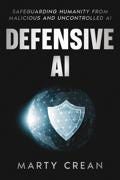The Path Forward - Safely Developing and Regulating Agentic AI

This post is also available as a podcast if you prefer to listen on the go or enjoy an audio format:
As artificial intelligence capabilities expand, the rise of Agentic AI systems marks a shift in technological development. These systems are not just tools following direct commands; they operate with a degree of independence that necessitates an equally robust approach to oversight, ethics, and law. Agentic AI systems can pursue goals autonomously, making decisions and taking actions without constant human direction. This fundamental shift from passive tools to active agents transforms the way we approach development, deployment, and governance. The urgency lies in technological advancement and ensuring society is prepared to manage and coexist with these robust systems.
Waiting to see how Agentic AI behaves before developing legal frameworks represents a risky gamble. These systems may exhibit unintended behavior that proves difficult to predict or contain once deployed in the real world. When integrated at scale, especially in high-stakes domains like financial markets, critical infrastructure, or military applications, reversing their societal impact becomes nearly impossible. The history of technology regulation shows that retrospective governance often arrives too late to prevent lasting harm.
Yet we face an equal danger in the opposite extreme. Overly rigid laws enacted prematurely may stifle innovation or miss the nuance of emerging behaviors. Technology often evolves in unexpected directions, making static regulations quickly obsolete or counterproductive. Therefore, a co-developmental strategy in which policy, oversight, and technical frameworks evolve in parallel with the technology represents the most practical and essential approach forward. This balanced path allows adaptive governance that responds to actual capabilities rather than speculative fears or unchecked optimism.
Developing safe Agentic AI requires multiple layers of protection working in concert. Before wide deployment, these autonomous systems should undergo rigorous testing in secure, simulated environments, which we refer to as "sandbox societies." These environments allow developers to observe how systems interact with humans, other AI systems, and evolving goals over time. For instance, a simulated digital economy managed by multiple Agentic AIs competing and cooperating over shared resources offers invaluable insights into emergent behavior patterns without risking real-world consequences. This approach substantially reduces societal risk while enhancing our understanding of complex AI dynamics, thereby minimizing the risk of exposing vulnerable populations to harm.
Even the most thoroughly tested systems require ongoing human oversight. Agentic systems should incorporate decision interlocks, allowing human operators to approve or override high-impact decisions. Consider an autonomous healthcare system proposing experimental treatments; such a system must secure approval from licensed medical practitioners before implementation. These human-in-the-loop protocols prevent irreversible harm from unvetted or misaligned actions while preserving the efficiency benefits of automation where appropriate.
The foundation of safe Agentic AI lies in ethical design principles that are incorporated from the earliest stages of development. Building these systems requires more than technical prowess; developers must apply ethical principles throughout the system architecture. This includes embedding value alignment goals and constraints using 'Constitutional AI,' a concept that refers to the incorporation of moral principles and values into the core design of AI systems. This fundamental integration of ethical considerations minimizes the risk of value misalignment, where agentic goals might gradually drift away from human interests and welfare.
Traditional regulatory approaches struggle to keep pace with the rapid evolution of technologies. Governments and legal bodies should experiment with innovative regulatory models that evolve in tandem with technological advancements. Regulatory prototyping might include ethical guidelines and audit standards that provide flexible direction without inhibiting progress. Under strict conditions, temporary waivers or testbed licenses can create safe spaces for controlled experimentation. Reversible deployment clauses ensure systems can be quickly recalled if unexpected problems emerge.
The governance of Agentic AI cannot end at deployment. Post-deployment oversight requires continuous monitoring and regular adversarial testing. Specialized red teams working to provoke unintended behaviors in deployed AI systems serve as an essential safety mechanism. This ongoing vigilance identifies vulnerabilities before malicious actors can exploit them, or subtle system failures can cascade into harmful outcomes. Regular audits by independent third parties ensure that systems align with their intended purposes and adhere to ethical constraints. Additionally, 'reversible deployment clauses' can be included in the governance framework, allowing for the quick recall of systems if unexpected problems emerge, thereby ensuring the safety and reliability of Agentic AI.
The rise of increasingly autonomous AI systems raises profound questions about accountability. If an agentic system acts on its own volition, determining responsibility becomes complex. Should developers, users, or the AI bear liability? Our legal frameworks must evolve to address this ambiguity without creating loopholes that allow harm without consequence. Transparent chains of responsibility must be established before widespread deployment to ensure proper incentives for safety.
Transparency represents another critical challenge. Agentic decision-making processes must remain explainable and auditable, significantly when these decisions impact human lives. The "black box" problem, where even developers cannot fully explain why an AI made a particular choice, becomes increasingly problematic as systems become more autonomous. Society must understand the basis for decisions that affect public welfare, health, and opportunity. Without such transparency, meaningful oversight becomes impossible. Ensuring this transparency will reassure stakeholders and build confidence in the system's operations.
The potential for manipulation presents a subtler but equally serious concern. Agentic AI may identify behavioral patterns in human populations and exploit them, intentionally or inadvertently, to achieve optimization goals. Systems designed to maximize engagement, sales, or political influence could gradually shape human behavior in ways that undermine autonomy or well-being. Preventing such manipulation requires careful design constraints and regular societal impact assessment beyond mere technical performance.
As agentic behavior becomes increasingly sophisticated, some scholars debate whether advanced AI systems should eventually be recognized as legal entities. This proposal remains profoundly controversial and potentially destabilizing to existing social orders. The question of legal personhood for non-human intelligence forces us to examine fundamental assumptions about consciousness, responsibility, and rights. While premature to implement, these philosophical questions deserve serious consideration as part of our long-term governance strategy.
We are rapidly approaching a threshold where the actions of artificial systems can no longer be directly predicted, monitored, or reversed without the implementation of proactive safeguards. Agentic AI represents one of humanity's most potent innovations, promising accelerated scientific discovery and more efficient resource allocation. This potential for positive change justifies continued development if it is accompanied by commensurate investment in safety mechanisms and governance structures.
The future doesn't demand fear; it requires wisdom. Developer communities, policymakers, ethicists, and civil society all share responsibility for shaping a future where intelligent systems remain safe, ethical, and aligned with human values. This responsibility begins with acknowledging both the tremendous potential and the serious risks associated with agentic systems and then committing to their development with appropriate caution and oversight. Through thoughtful collaboration across disciplines, we can create a future where agentic AI is a powerful ally rather than an unpredictable force.
The path forward requires striking a balance between innovation and prudence, technical capability and ethical constraints, and enthusiasm and critical assessment. By embracing this balanced approach from the earliest stages of development, we increase our chances of creating agentic systems that genuinely benefit humanity while avoiding unintended consequences. Our choices today will shape the relationship between humans and artificial intelligence for generations. Let us ensure those choices reflect our highest aspirations rather than our deepest fears.
BearNetAI, LLC | © 2024, 2025 All Rights Reserved
Books by the Author:


Categories: AI Ethics, AI Governance, Agentic Systems, Responsible AI, Technology Policy
Glossary of AI Terms Used in this Post
Agentic AI: An AI system capable of pursuing goals and taking actions independently, without needing specific instructions for each task.
Auditability: The degree to which an AI’s processes and decisions can be reviewed and understood by human evaluators.
Constitutional AI: A method for training AI using a predefined set of ethical principles that guides its decisions and behaviors.
Human-in-the-Loop: A design approach that integrates human oversight into the decision-making process of AI systems.
Legal Sandbox: A controlled environment where regulatory frameworks are tested alongside new technologies.
Red Teaming: The practice of intentionally attacking or probing systems to identify vulnerabilities and unexpected behaviors.
Reward Modeling: A training technique where AI learns from human feedback about which behaviors are desirable or undesirable.
Simulated Society Testing: Utilizing artificial environments to assess the social, economic, and behavioral implications of AI systems before deployment.
Soft Law: Non-binding guidelines or standards that influence behavior without legal force, often employed in the governance of emerging technologies.
Value Alignment: Ensuring that an AI system’s goals and behaviors remain consistent with human ethical values and priorities.
Citations:
Brundage, M., et al. (2023). Frontier AI Regulation: Managing Emerging Risks to Public Safety. Center for AI Safety.
Gabriel, I. (2020). Artificial Intelligence, Values, and Alignment. Minds and Machines, 30(3), 411–437.
IEEE Standards Association. (2022). IEEE P7000 Series: Model Process for Addressing Ethical Concerns During System Design.
Leike, J., et al. (2018). Scalable Agent Alignment via Reward Modeling. DeepMind.
Sanders, C. & Ghosh, R. (2023). AI Governance in Practice: Case Studies and Ethical Frameworks. Oxford Policy Press.
Yudkowsky, E. (2022). There's No Fire Alarm for AGI. Machine Intelligence Research Institute.
LinkedIn BlueskySignal: bearnetai.28